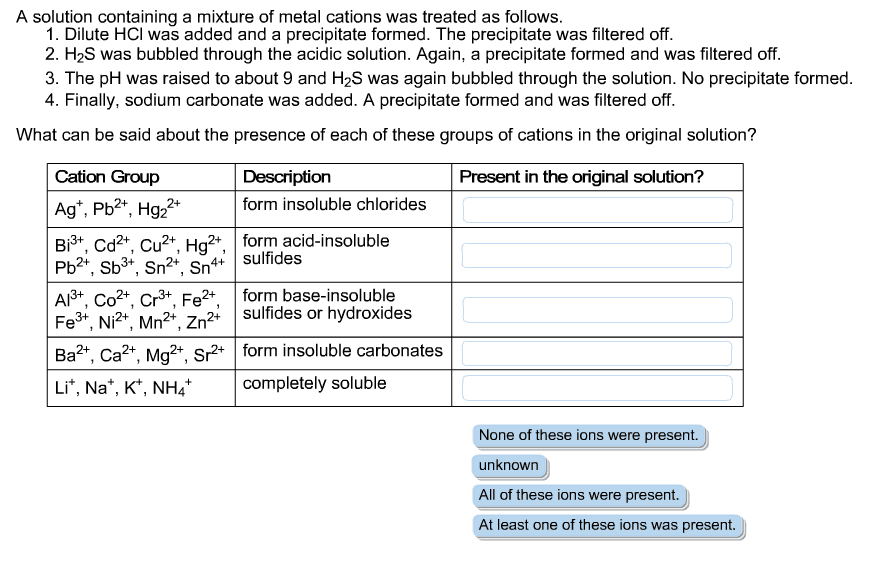In the experiment Part 1: separate a mixture of known cations: Pb2+, Fe3+, Al3+, Cu2+, and Ca2+ into individual ions. perform a series of tests to become familiar with reactions characteristic of eacth cation.
Part 2: Separate and identify indicidual cations in an unknown solution containing a mixture of up to five cations. Use information gathered in part 1 to identify the cations.
In this lab you will be working with a solution containing a mixture of cations. Before indicidual components of the mixture can be successfully identified, they have to be separated. the individiual cations, once separated, can then be identified in ensuing confirmatory reactions. Knowing the actual results of the reactions characteristic for a given cation makes it easier to identify the ion in an unknown sample. Therefore, it is useful to perform all of the characteristic reactions first on a micture of ions of known identity, and then proceed to the unknown sample.
A. Why is it important to mix the solutions after adding the reagents? How is mixing done in this experiment?
B. What is the reason for rinsing the precipitates before further testing?
C. What tow things are extremely important to remember when centrifuging?
D. Why is it possible to separate CU2+ from Al3+ and Fe3+ with NH4OH but not with NaOH? (hint, consider solubility properties)
In the experiment Part 1: separate a mixture of known cations: Pb2+, Fe3+, Al3+, Cu2+, and Ca2+ into individual ions. perform a series of tests to become familiar with reactions characteristic of eacth cation.
Part 2: Separate and identify indicidual cations in an unknown solution containing a mixture of up to five cations. Use information gathered in part 1 to identify the cations.
In this lab you will be working with a solution containing a mixture of cations. Before indicidual components of the mixture can be successfully identified, they have to be separated. the individiual cations, once separated, can then be identified in ensuing confirmatory reactions. Knowing the actual results of the reactions characteristic for a given cation makes it easier to identify the ion in an unknown sample. Therefore, it is useful to perform all of the characteristic reactions first on a micture of ions of known identity, and then proceed to the unknown sample.
A. Why is it important to mix the solutions after adding the reagents? How is mixing done in this experiment?
B. What is the reason for rinsing the precipitates before further testing?
C. What tow things are extremely important to remember when centrifuging?
D. Why is it possible to separate CU2+ from Al3+ and Fe3+ with NH4OH but not with NaOH? (hint, consider solubility properties)


